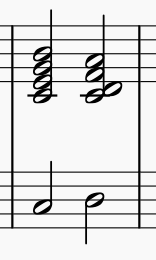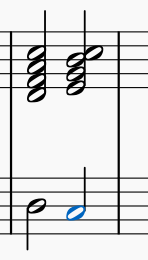The study of voice leading is a deep topic with a close relationship to counterpoint; it's hard to summarize briefly. In a "real" piece of music, even one that adheres to typical common-practice-period-type rules, there are many, maybe even an infinite number of, "proper" ways to move from CM7 to Dm7, taking into account what all the voices might be doing during the chord change. What would work well in any particular context has a lot to do with what's going on otherwise in the music around that time.
That said, your goal is generally to keep each voice independent while moving them smoothly but not monotonously. There are precise technical ways of defining terms like "independent," "smooth," and "monotonous," but I recommend reading a counterpoint manual for that sort of thing. In terms of the points you brought up, avoiding parallel 5ths is out of a desire to keep the voices independent (the 5th is such a consonant interval that voices moving together in 5ths sort of "merge"—think of power chords in rock music). By the same token, it's generally good to balance parallel and contrary motion between the voices, as opposed to having everything move in parallel (i.e. the same direction, as you say).
All of your examples start with the C chord in root position with closed voicing, and you seem interested in keeping all four chord tones in both cases. You also say you want all the voices to "progress by a single step", which from your examples looks like you want all the voices to move stepwise or by step (that's the technical term; the opposite is by leap). Those are pretty extreme restrictions that I wouldn't say reflect "proper voice leading practice" necessarily—they're not improper, per se, but they get in the way in some ways.
In particular, I don't think there's any reason to have all the voices move by step. Again in the interest of keeping voices independent, and also to gives each voice an interesting line, it's good to have them move by leap sometimes. You generally don't want all of them to move by leap together, because that sounds rough (the general term for voices moving frequently or mostly by leap is angular, though that's a neutral descriptor in terms of "correctness" or whatever). As you've discovered, though, having them all move by step tends to create problems, and if you keep it up for several chords the music may get a bit dull. So, I'm going to show you some examples with a bit of leaping, because I'd like to encourage you to get comfortable with that and it closer reflects common practice.
 (listen)
(listen)
Exactly as written, some of these changes might be unacceptably dissonant to a typical 18th-century listener or what have you, but (a) music of that time would generally solve that problem by having the voices move more during the chord change and (b) who cares if it sounds good to us today? :P
Also, the last change I showed has a unison between the bass and the lowest middle voice, which in some circumstances would be undesirable (again, keeping the voices independent, etc. etc.), especially since the bass leaps into it, although this is mitigated by the fact that the other voice is stationary. This is one of those places where context really matters, though—the way you handle what comes after that will determine if the bass vanishes into the other voices or maintains its independence. It also would be a bigger issue in e.g. a solo piano piece than in a piece for ensemble. Also, in "real life", you might want the bass to vanish sometimes. As a composer you have to learn to make judgement calls about things like this.







